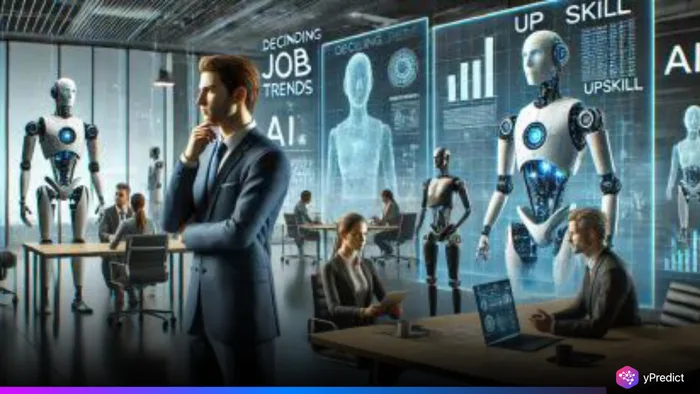
The race to forecast mass unemployment due to artificial intelligence is heating up in corporate America, and it’s no longer just a cautionary tale. It’s becoming a CEO talking point, and some say, a competitive flex.
What started with a stark prediction by Anthropic CEO Dario Amodei in May, warning that half of entry-level jobs could disappear within five years, potentially pushing U.S. unemployment up to 20% has now turned into a full-blown trend. Top corporate executives are openly projecting dramatic AI job losses, framing the coming disruption not just as inevitable, but imminent.
AI Job Loss Projections
Top executives are now openly acknowledging the disruptive impact of AI on jobs. Dario Amodei of Anthropic warned that AI could wipe out 50% of entry-level positions within five years. JPMorgan’s Marianne Lake projected a 10% cut in the bank’s workforce due to AI integration. Amazon CEO Andy Jassy told employees to brace for a smaller team as the company undergoes a massive technology shift.
ThredUp’s James Reinhart emphasized that AI will eliminate far more jobs than most people expect. Ford’s Jim Farley claimed AI will replace half of all white-collar roles in the U.S. The Wall Street Journal highlighted this shift in tone, noting how CEOs now speak candidly about AI-driven job losses, signaling major organizational changes ahead.
From Reassurance to Reality
For years, tech leaders maintained that AI would augment rather than replace workers, often pointing to productivity gains and new job categories. But the rhetoric is changing fast.
What once sounded like PR damage control is evolving into a corporate strategy signal that cost-cutting via automation is now not only accepted but expected. Public statements, once designed to calm fears, are now preparing markets and employees for sweeping workforce changes.
What AI Job Loss Means for Workers and Policymakers?
While AI optimism remains high among investors, the human cost is gaining urgency. If these CEO projections come true, policymakers will need to urgently rethink workforce training, job guarantees, and social safety nets.
Yet, some experts caution that AI’s full impact is still uncertain, and these warnings could also be tactically used to justify layoffs, boost shareholder value, or pressure regulators.
Conclusion
Whether these AI job loss projections are accurate forecasts or boardroom bluster, one thing is clear: the gloves are off in the AI era. And in corporate America, being the first to call a workforce revolution may be just as valuable as surviving it.






